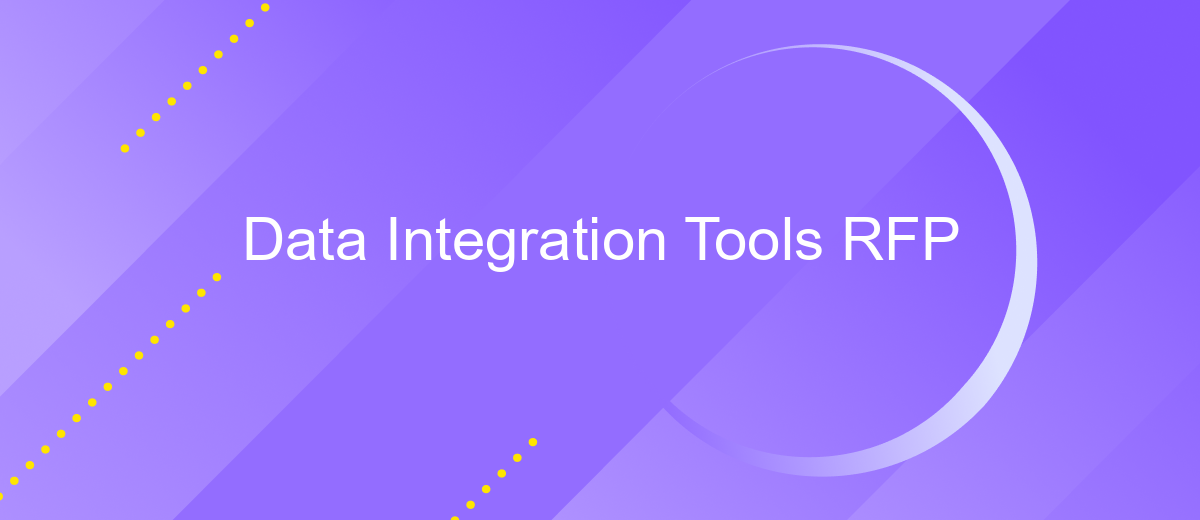Data Integration Tools RFP
Selecting the right data integration tool is crucial for organizations aiming to streamline their data workflows and enhance decision-making. This Request for Proposal (RFP) guide outlines the key features, capabilities, and considerations to help you choose the best data integration solution for your needs. Dive in to discover how these tools can transform your data management processes and drive business success.
Executive Summary
Data integration is a critical component for organizations aiming to streamline operations and enhance decision-making processes. The selection of the right Data Integration Tool is essential to ensure seamless data flow and interoperability between various systems. This document outlines the key requirements and evaluation criteria for choosing the most suitable Data Integration Tool.
- Scalability and Performance
- Ease of Use and User Interface
- Data Transformation Capabilities
- Integration with Existing Systems
- Cost-effectiveness
Our analysis includes a comprehensive review of leading tools, highlighting their strengths and potential drawbacks. Notably, ApiX-Drive stands out for its user-friendly interface and robust integration capabilities, making it a viable option for businesses of all sizes. By leveraging such tools, organizations can achieve efficient data management and gain actionable insights, driving overall business growth.
Background and Business Objectives

In today's fast-paced business environment, seamless data integration is critical for organizations to maintain efficiency and competitiveness. Data integration tools enable businesses to consolidate data from various sources, ensuring that information is accurate, accessible, and actionable. By leveraging these tools, companies can streamline their operations, improve decision-making, and enhance overall productivity. The need for a robust data integration strategy is more pressing than ever, as businesses face increasing volumes of data and the necessity to integrate disparate systems.
Our primary business objective is to identify and implement a data integration solution that meets our specific needs, ensuring smooth and efficient data flow across all departments. We aim to enhance our data management capabilities, reduce manual data entry, and minimize errors. One potential solution is ApiX-Drive, a service designed to facilitate the integration of various applications and services without requiring extensive technical expertise. By utilizing ApiX-Drive, we can automate data transfers, improve data accuracy, and ultimately drive better business outcomes.
Functional Requirements

When selecting a data integration tool, it is crucial to consider the functional requirements that will ensure seamless and efficient data management across various platforms. The tool should be capable of handling diverse data sources, providing real-time data integration, and supporting scalability as the data volume grows.
1. **Data Source Connectivity**: The tool should support a wide range of data sources, including databases, cloud services, and on-premises systems.
2. **Real-Time Data Integration**: It must offer real-time data integration capabilities to ensure up-to-date information is always available.
3. **Scalability**: The solution should be scalable to handle increasing data volumes and complexity.
4. **Data Transformation**: It should provide robust data transformation features to clean, enrich, and standardize data.
5. **User-Friendly Interface**: A user-friendly interface is essential for non-technical users to set up and manage integrations easily.
6. **API Integration**: Tools like ApiX-Drive can facilitate seamless API integrations, automating data workflows efficiently.
7. **Security and Compliance**: Ensuring data security and compliance with industry standards is paramount.
By focusing on these functional requirements, organizations can select a data integration tool that not only meets their current needs but also adapts to future demands. Tools like ApiX-Drive can significantly enhance the integration process, providing a robust and user-friendly platform for managing data workflows.
Technical Requirements

When considering Data Integration Tools, it is crucial to define the technical requirements to ensure seamless and efficient data flow across systems. These requirements help in evaluating the capabilities and compatibility of various tools with existing infrastructure.
First and foremost, the tool must support a wide range of data sources and formats, including but not limited to databases, cloud services, and APIs. It should offer robust data transformation capabilities to clean, enrich, and standardize data before integration. Additionally, real-time data processing is essential for maintaining up-to-date information across platforms.
- Compatibility with various data sources and formats
- Advanced data transformation and enrichment features
- Real-time data processing capabilities
- Scalability to handle large volumes of data
- Secure data transmission and storage
Tools like ApiX-Drive can be particularly beneficial, offering seamless integration with numerous applications and services. Their user-friendly interface and automation capabilities simplify the process of setting up and managing data integrations, ensuring that data flows accurately and securely between systems.


Vendor Response and Evaluation Criteria
Vendors are required to provide comprehensive responses to all sections of the RFP, detailing their capabilities, experience, and how their solutions meet the specified requirements. Responses should include case studies, client testimonials, and detailed technical specifications. Additionally, vendors should outline their support and training services, ensuring that clients can effectively utilize their integration tools. Highlighting unique features, such as those offered by ApiX-Drive, which simplifies the setup of integrations without the need for coding, can be particularly advantageous.
Evaluation criteria will be based on several factors, including the robustness and scalability of the proposed solutions, ease of use, and the ability to integrate with existing systems. Cost-effectiveness, vendor reputation, and customer support will also play significant roles in the evaluation process. Special consideration will be given to solutions that offer seamless integration capabilities, such as those provided by ApiX-Drive, which allows for quick and efficient setup, ensuring minimal disruption to business operations.
FAQ
What is an RFP for Data Integration Tools?
What are the key features to look for in Data Integration Tools?
How can Data Integration Tools enhance business operations?
What are the common challenges faced during data integration?
How can automation tools assist in data integration processes?
Time is the most valuable resource for business today. Almost half of it is wasted on routine tasks. Your employees are constantly forced to perform monotonous tasks that are difficult to classify as important and specialized. You can leave everything as it is by hiring additional employees, or you can automate most of the business processes using the ApiX-Drive online connector to get rid of unnecessary time and money expenses once and for all. The choice is yours!

